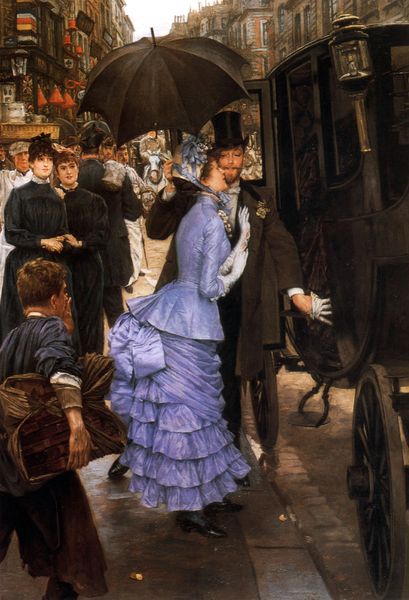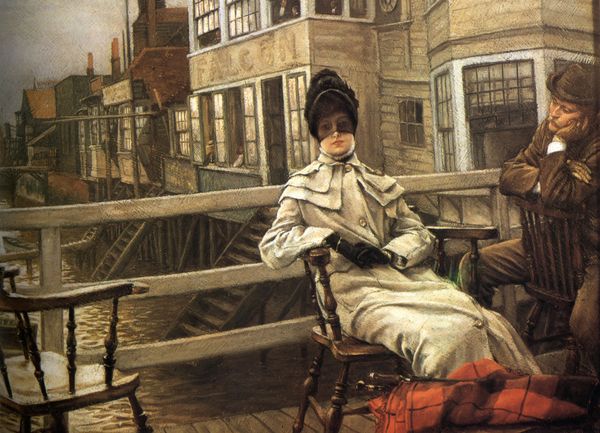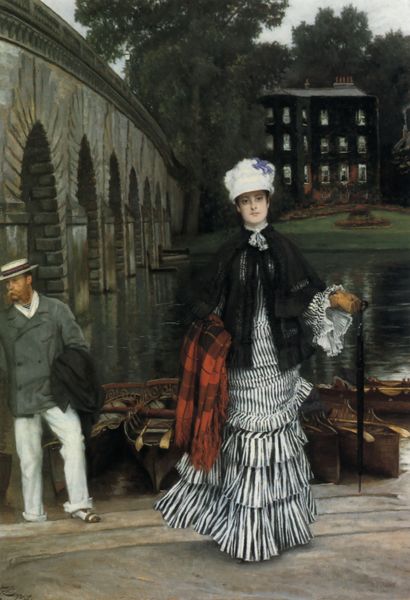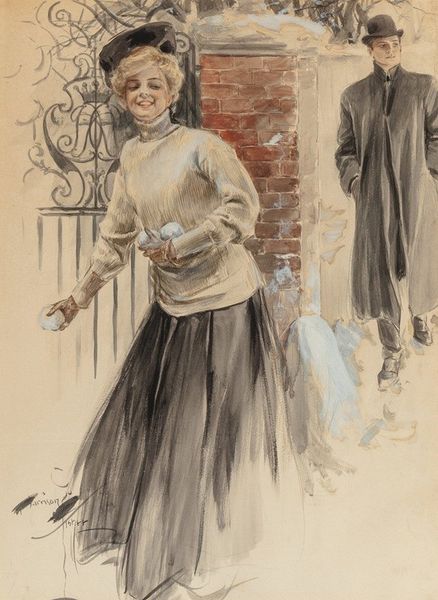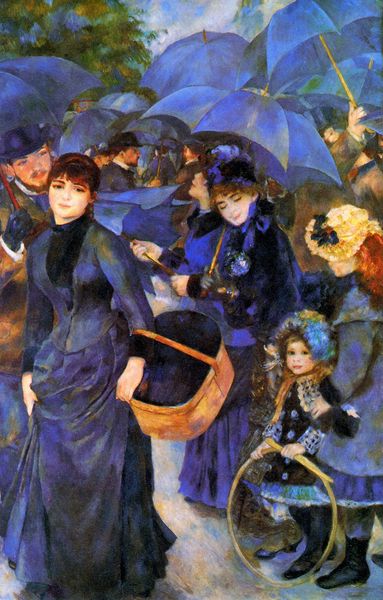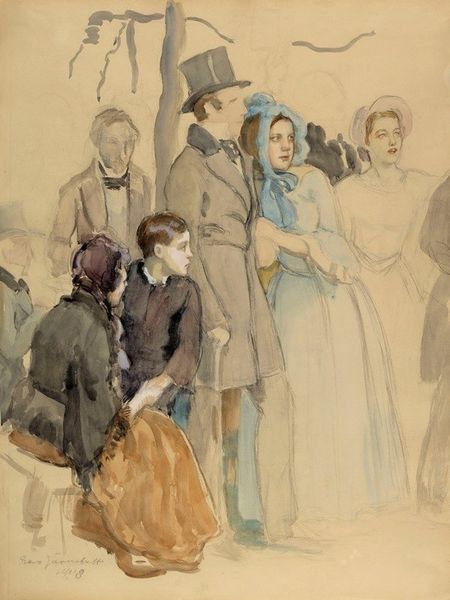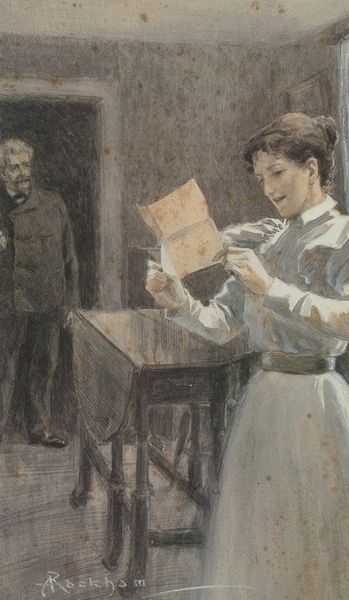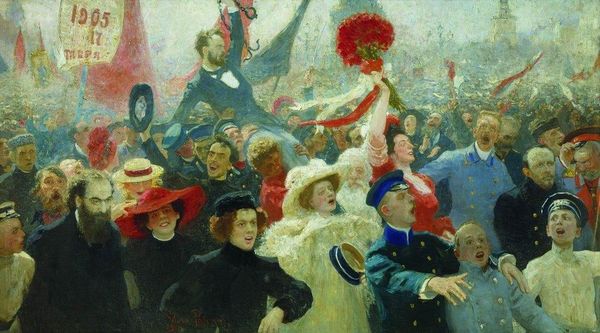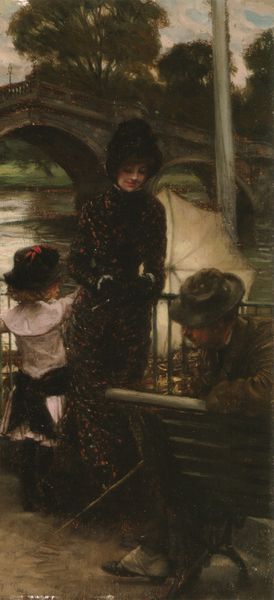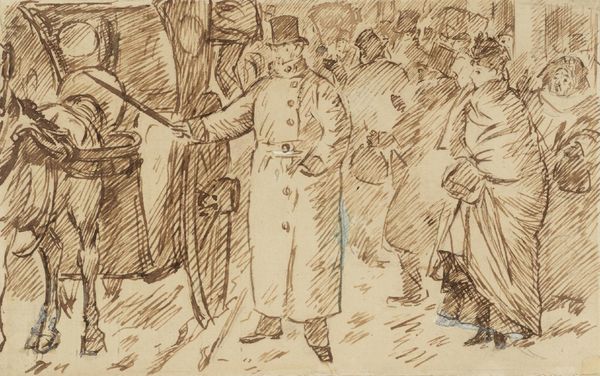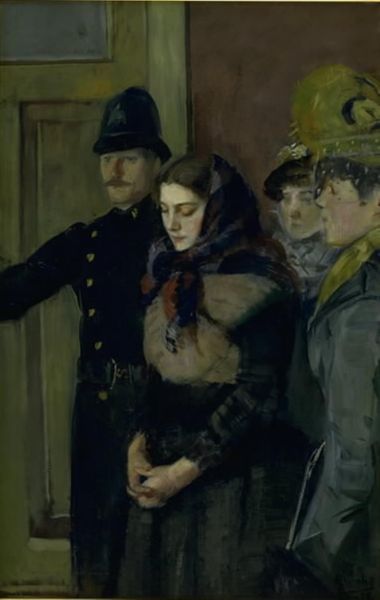
painting, oil-paint
#
portrait
#
figurative
#
narrative-art
#
painting
#
impressionism
#
oil-paint
#
genre-painting
Copyright: Public Domain: Artvee
Editor: James Tissot’s "Embarkation at Calais," painted between 1883 and 1885 in oil paint, portrays a fashionable woman descending a gangplank amidst a crowd. It feels like a staged snapshot of 19th-century social dynamics, doesn't it? What complexities do you find most intriguing here? Curator: Indeed. Tissot offers us a lens into the intersection of gender, class, and national identity within the socio-political landscape of the time. How does the woman's attire—the fabrics, the cut—speak to her social position in relation to those around her? Consider her isolation in the crowd, doesn't it underline something specific about women’s experience during the period? Editor: I see what you mean. The details of her clothing do create a contrast against the working-class figures nearby. It’s interesting to consider how the painting functions as both a portrait and a broader social commentary. Curator: Precisely. Look closer at the gazes—who is looking at whom? What does her central placement suggest about the male gaze, particularly during this era? Does her posture— the somewhat deliberate descent—evoke a sense of performance, of constrained agency, or of something else? Editor: I never really thought about that… It makes me question the power dynamics at play and the role of women in public spaces. Thank you! Curator: These images often mask deeper conversations about access, privilege, and representation. Seeing them for their overt beauty prevents consideration of the social inequalities of the era. It’s always exciting to discover new meaning in paintings we thought we understood!
Comments
No comments
Be the first to comment and join the conversation on the ultimate creative platform.
